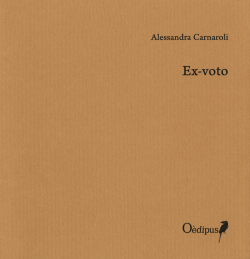Editorial
by Francesca Del Moro
Inspired by the story of Le Clézio, the poets focus on the conflict between human beings and whales or on their common fate. With a two-colour palette – the grey of the skin and the red of blood – Cristina Bove paints a violent scene remindful of the paintings of German Romanticism, where men are lilliputian bearers of death and the whales are huge and innocent victims of human brutality, the same brutality that they do not hesitate to use against their counterparts. Rita Stanzione focuses on the sorrowful figure of a former whaler who, after having reddened the sea for so long, is overwhelmed by it in the end, and a lament reconciles him with the creatures that were once his opponents. A possible harmony between human beings and whales is also celebrated in the calligram by Giorgia Monti where, echoing biblical stories and fairy-tales, the author replaces the birds’ silhouettes filled with sky and the other objects floating in the air that are typical of Magritte with a whale that shares the pain and loneliness of the person who has taken shelter in its belly.
The grey and the red
by Cristina Bove
Ribs drawn with Indian ink
the remains of the Titans
were generated by blood in the sand
a deluge reddened the coastline
after the long waits
_they should land for life
they died beached in the dust_
seafarers were colourless
only the whirls dripped scarlet
the ship with dull sails
landed in the belly of giants
from the mainland
hordes of Lilliputian sailors
raise anchor towards places of massacres
colour-blind ogres
planner of extermination
_landfills for humans
beaches for whale killing_
The Whale
by Giorgia Monti
The Magritte sky disappears in the dark belly of the whale.
The whale is big
she sails the sky
and swallows the clouds.
And the Magritte sky loses its colour in the dark belly of the whale.
Darkness turns pitch in the dark belly of the whale.
Where are you?
I’m under the dark belly of the crying whale.
Why does she cry?
She’s too big.
She sails the sky and feeds on clouds.
Where are you going?
Into the dark belly of the whale
where there’s room for my tears.
Who sees them?
No one.
Who hears them?
No one.
Who stops them?
No one.
The Magritte sky disappears in the dark belly of the whale.
Where are you?
In the dark.
What are you doing?
What are you doing?
I’m painting a Magritte sky in the dark belly of the whale.
Who sees it?
No one.
Who sees it?
I see it.
Why don’t you come down?
Now you try to come up.
I’m scared.
Then leave me alone.
What does a whale do in the sky?
She cries.
Why?
She does it for me.
What have you done?
I’ve been crying.
Who’s aware of that?
Who’s aware of that?
From the dark belly of the whale the rain is falling.
And you?
I’m staying.
The bay of the whales
by Rita Stanzione
It moves ahead in the bay eavesdropping nothing
his seaweed heart, it becomes glooming
for all the winter covering the empty waters.
He was one of them, the hand of violent
blade between beached tails
stones after the leap,
the last one, donated its red
to the cowardly and sinister sleep.
The sea annihilates him
the huge and awkward scale
stirring, silencing, going back to the bottom.
An ocean wave
rushes over and does not give relief
pushed back in sand mouths.
He follows it, with the lament of all laments
of mothers, children and old whales
ready to die where it peacefully bends,
the music of the sea.
Ex-voto
by Alessandra Carnaroli
The body is nothing but this: matter. Organic matter and, as such, subject to deterioration. An idea that was already central in other works by Alessandra Carnaroli, starting from Femminimondo, where violence against women was literally ‘spoken’ by their wounded bodies. And yet, the title Ex-voto evokes a spiritual dimension, reflecting both in the grotesque invocations to a God “committed to online miracles” and in the choice of the book format, that suggests multiple variations in the reading sequence, resembling a series of polyptychs. The book is completed by a set of holy pictures, drawn with a quick, childish stroke, matching the language cut to the bone. Announced by the front cover flap, the first drawings show body parts – hands and feet – quoting anatomical ex-votos, often representing the wounded part, which becomes itself a symbol of the disease the sick pray to recover from. Pathological details return in the following images, like features of saint martyrs without any hagiography: anatomical parts are out of proportion, overflowing from stylised bodies. The disease takes over, as a den of pain and transformations, catching our attention. In pathological anatomy, the body part affected by the disease becomes the characteristic feature of the person, getting bigger and bigger, to the point that it conceals all the rest. Maintenance and repairing interventions mark the passing of time, with a full set of medical instruments and procedures, having the only purpose to postpone the unavoidable decay. Each ‘polyptych’ formed by the pages of the book is like a hospital room with its four or five beds, displaying medical records in verse. “It stays difficult to imagine” is the refrain revealing how everything could overturn at any moment, reminding us that someday we will end up in a hospital too. Death, which is anything but romantic, doesn’t come, but it is always impending. Here and there, some phrases flash that could be mistaken for signs of affection, some oblique references to hot themes such as anti-vaccination positions or the denial of rights of not-married couples slip in, but cynicism triumphs everywhere (for example, in begging the grandfather not to marry his caregiver so as to not lose the inheritance). Not a gentle look over the loss, not even a little bit of empathy. Just the cold observation of body alterations, even with some admiration for the creativity of the disease at work: organs sucked up by metastasis, severed legs, faces swollen as eggs, yellow lips, pus, saliva, scars, plagues, liquids pouring from the least expected places. The sick person has the same dignity of a “rotten nougat”. Only prayers arise here and there, but they are just utilitarian, pragmatic requests. Where human cares fail, an ultimate therapy is needed, and God is like a medicine “saving human lives / with no need of testing it / on rabbits first”.
Alessandra Carnaroli
Ex-Voto
Oèdipus, 2018

